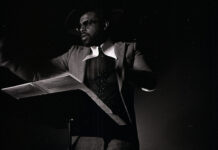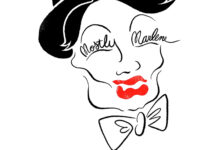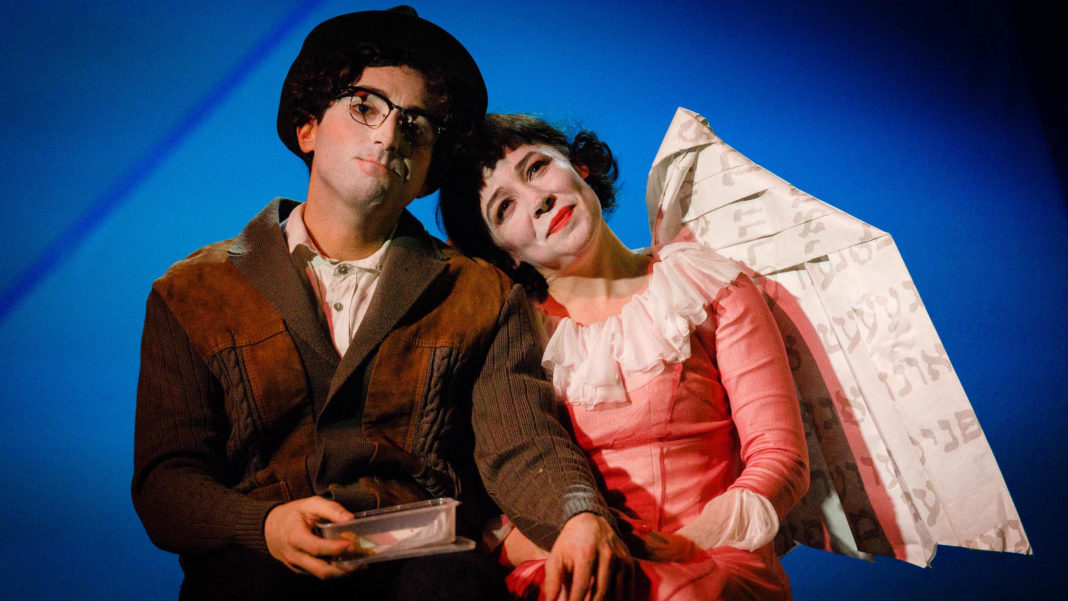In 1992, Emma Rice and Daniel Jamieson collaborated on and starred in a show called Birthday. In it they portrayed the relationship between the artist Marc Chagall and his wife, Bella. The show was “lost” for many years. Armed with new details about Chagall’s wife they reworked the show which is now entitled The Flying Lovers of Vitebsk. In the production that runs through Sunday at the Wallis Annenberg Center for the Performing Arts in Beverly Hills, Marc Antolin portrays Chagall and Daisy Maywood plays Bella.
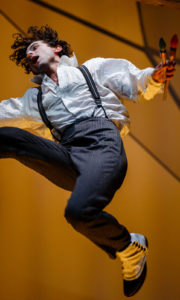
I recently spoke with Welsh actor Antolin by phone about the genre-defying show, the artist who inspired it and his newfound personal connection not just to Chagall but his works.
You worked with Rice and Jamieson on this new production. How did their intimate involvement as both creators and originators of the performances shape your experience doing The Flying Lovers of Vitebsk?
I first started to work on the project about two years ago. At that time there was a script, but we didn’t have the movement sequenced or songs written into the script. We just had the text by Daniel. Emma and Daniel worked from memory, but it was a very different production. What they wanted to do was revisit it from an older perspective and reflecting on Bella and Marc’s relationship after Bella had passed away. It was incredible to have their insights. You also feel a certain pressure to do a good job with it. It was also nice to have their allowance and the artistic license to develop the whole thing.
The show is very unique and defies easy description. How did you tackle putting together your performance in a show that requires acting, singing, dancing, movement, pantomime, but isn’t just one thing?
I think there’s something exciting about that. When you go to the theatre you want to be slightly challenged. There’s so much for me to do in terms of my skill set. I never delved much into clowning until I did this production. I hadn’t danced properly before I did this production. So to tap into the dance training I had as a youngster was great. What’s so lovely about the piece is all the genres marry together so well. It constantly keeps the action moving and the audience guessing.
There’s a promo video for the production that shows a handwritten list about Chagall that describes him as “self-obsessed, driven, consumed, passionate, insecure, loyal and unafraid.” Is that how you see him?
That was during the workshop week on the show and we sort of looked into the characters of Marc and Bella. Those were words we just threw down. Chagall lived until 97 and saw so much history. At some point in life we go through all those different emotions. Particularly as an artist you might show them a bit more than someone who isn’t. It’s been incredible to use all those different emotions throughout the piece. There are certain moments in the show, depending on how I’m feeling that day, I might use a slightly different emotion. The four of us [there are also two musicians who interact with Marc & Bella] are so in tune with one another that if you make a minor change, we all go along with it.
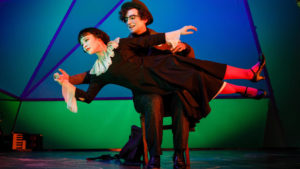
While I was watching the play it seemed as though snippets or references to Chagall’s work are recreated on stage. Can you talk about that?
Emma and choreographer Etta Murfitt used so much of Marc’s paintings as references and it’s lovely when people who know the work tap into the references. Some of the paintings, when they are elevated or are flying in the air, are tough with two people, but we tried to recreate them as on point as we could really.
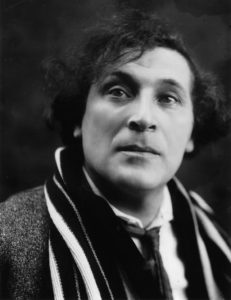
Marc and Bella lived through a traumatic time in history. A time that doesn’t seem radically different than our own. What do you think their journey can teach us as we navigate our own tricky time?
I think one of the most incredible things is their story wasn’t that long ago. We look at that as such a traumatic time and it’s incredible that it’s happening now. We had a group of high school kids come in and it was amazing because we are showing it to them, but opening their eyes to what’s happening now and letting them know it has happened before and we haven’t learned from it. Retelling these stories and particularly in a non-lecture type of atmosphere is what we do in theatre. The audience invests in the human elements of [Bella and Marc] and gets a massive insight into their lives. It really hits home.
Marc Chagall said, “Art seems to me to be a state of soul more than anything else.” How is your soul inspired by this show and your work in it?
I think there’s something about being influenced by everything around you and that is constantly changing, which is lovely. Your work is constantly being inspired. Putting that into your work is so lovely. I went to see a couple of Chagall paintings the other day. It was weird. I studied them for this piece and when I saw them I felt like I painted them in a way because I have a big connection with them which you can’t really describe. You want to honor the person you are playing and you are doing a lot of that work. It was a massive moment seeing these paintings and feeling attached to them in such a weird way.
Photo Credit: Steve Tanner


